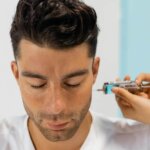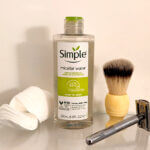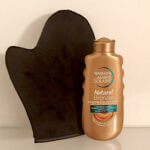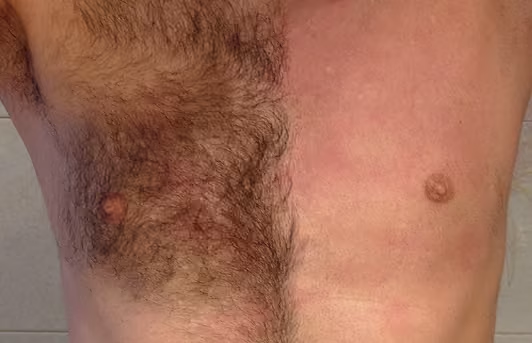
There are several ways to safely remove body hair at home. Which you choose depends on how often you’re prepared to do it, your pain threshold, and where the hair is. From shaving and epilation to IPL, let’s take a look at the possibilities.
I was raised in an age when men were expected to be hairy. In fact, as a teen, I was thrilled when hairs finally began to sprout on my chest, legs, and forearms. But by the time I started to write on personal grooming back in 2009, body hair was regarded with distaste. Even disgust. So its removal became something men wanted to read about.
Because I can’t write about something I’ve never experienced, I jumped on the bandwagon and stripped myself of hair from the neck down. Being slim and not particularly muscular at the time, it left me looking like a 12-year-old.
Then came the all-over prickly sensation of regrowth. My other half wasn’t too impressed, either.
But I persevered with all the various methods of hair removal until my research was finally complete. And what a relief it was.
Maintaining hairlessness is a real chore.
Of course, if you’re an athlete, a bodybuilder, a model, or an actor, you may not have a choice.
Or maybe you’d just like to find out how it is to be hairless (again).
Don’t, however, believe it’s more hygienic; hair absorbs sweat to keep the skin dry and minimize bacteria. This is why it’s better to trim rather than shave if you feel your body hair is too excessive to be appealing.
But whatever your reasons, the most important thing is that you know how to depilate properly.
Timing and Preparation
When to Remove Hair
Evening is the best time to remove body hair in order that your skin can recuperate while you sleep. It’s bound to be sensitive, so spraying it with deodorant and cologne or exposing it to blazing sun should be avoided.
Preparing for Hair Removal
You’ll find depilation more comfortable if you soften your hair and skin with a warm bath or shower beforehand.
At the same time, exfoliate with a body scrub. This lifts the hair for more effective removal, sloughs away dead cells and other debris so as not to clog devices, and prevents ingrown hairs.
Shaving
Shaving is the easiest way of removing body hair at home. But because it needs doing at least every other day, it can lead to irritations—especially if you wet shave.
Wet Shaving
Cartridge or Safety Razor
I shave my face and the few stray hairs that sometimes appear on top of my head with a safety razor. Having only one blade, it cuts the hair above skin level, preventing irritations and ingrown hairs.
But to avoid cuts and nicks, it’s important to use shaving soap and a shaving brush.
Shaving with a cartridge razor, on the other hand, doesn’t require a brush. Nor a soap-based lubricant.
Instead of gel or foam, use oil, which offers several advantages:
- Oil is transparent, allowing you to see exactly what you’re doing.
- It’s a great moisturizer.
- You’ll get a smoother shave.
- You’ll be less liable to cuts and nicks.
- It reduces or eliminates the probability of razor bumps and rashes, even if you shave daily.
There’s no need to buy a product labeled “shaving oil”; any cosmetic or edible oil is appropriate. If you shave in the tub and your back and shoulders are prone to acne, use jojoba or sunflower oil, which are non-comedogenic.
You can also apply oil beneath a soap-based lubricant. Experiment to find out what works best for you.
A further option is hair conditioner, which offers the same benefits as oil but is obviously a little more opaque.
Another advantage of cartridges over a safety razor is their pivoting head, which glides more efficiently over the body’s contours. It also takes less time; due to multiple blades, you’ll get close results with one pass.
Before shaving for the first time, trim your body hair with clippers. And always shave with the grain (in the direction of growth). If you’re shaving your whole body, you may need to change the razor more than once.
For back hair, invest in a razor with an extendable handle.
Dry Shaving
Dry shaving eliminates the risk of cuts and nicks completely, making it a good option for sufferers of varicose veins, warts, and eczema, or if you’re on blood thinners.
I found dry shaving a quick and easy way of eliminating prickly regrowth and would probably have adopted this method permanently had I continued to shave.
For a finish as smooth as you’d expect from wet shaving, try a wet and dry device that you can use in the bath and shower.
Or, if shaving with a non-water-resistant device, sprinkle your skin with body or barber powder beforehand. This allows for a closer shave and prevents irritations.
Again, always shave with the grain, and trim longer hairs before you begin.
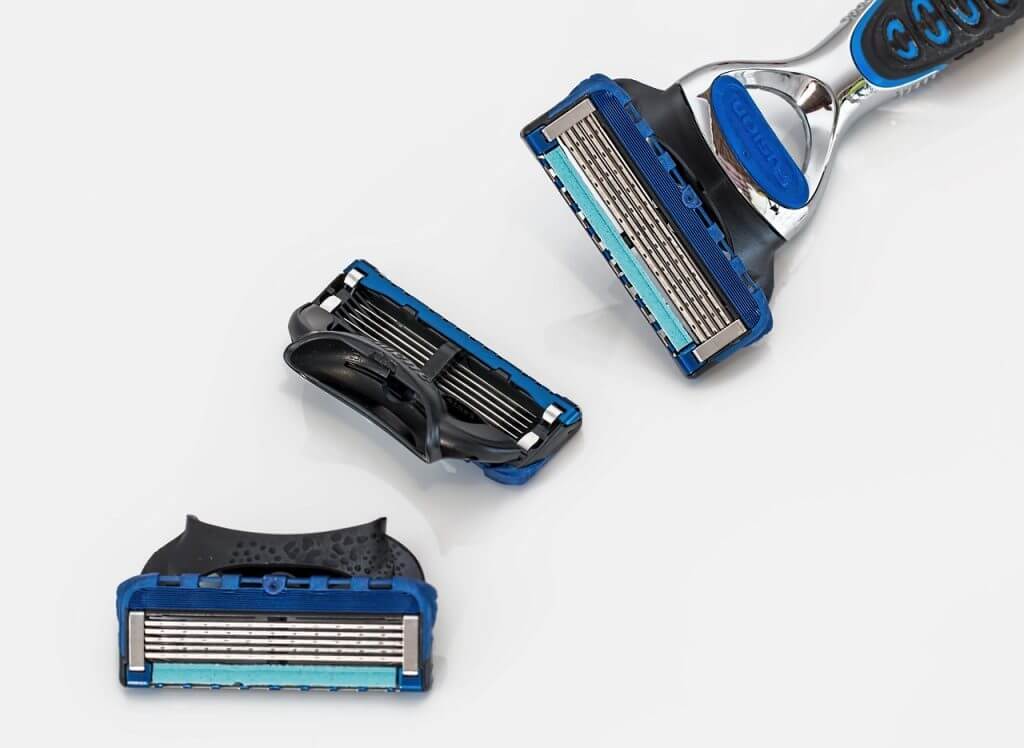
Epilating
A longer-lasting but more painful way of removing body hair at home is epilation, which is the process of extracting hair at the root. This you can do by waxing or sugaring, or with an epilator. Precisely how long you’ll remain hair-free depends on the body area—e.g., underarms might need doing every two weeks, and your chest every three weeks.
Epilating is only effective on hair that is at least 1/8 inch (3 mm) long, but, even then, it may not be absolutely thorough. For immaculate results, you’ll probably have to finish off with a pair of tweezers.
Owing to its abrasive nature, epilation is unsuitable for sufferers of varicose veins, warts, eczema, and diabetes.
It’s also advisable to avoid tanning either directly before or after epilating, whether in the sun or a solarium. Always wait at least 48 hours.
If you don’t mind the pain, the only real disadvantage of epilation is that you’ll need somebody to help with your back hair.
Hair Removal With an Epilating Device
Epilators extract hair with a mechanism resembling multiple tweezers, which is why they’re sometimes referred to as “electric tweezers.”
More expensive models have an integrated massage function, as well as the ability to hold the skin taught to lessen pain. A wet and dry device used under the shower can further minimize discomfort.
Epilators are safe for all body areas.
To use, place the head against the skin at a 90-degree angle without applying pressure, and work slowly against the grain. Don’t forget to hold the skin taut to reduce pain.
Waxing and Sugaring
Because waxing and sugaring only work on skin that is dry and oil-free, dust the area you want to treat with body powder or cornstarch before you begin.
After treating, wipe away any wax that remains on the skin with either vegetable or baby oil and a tissue.
Cold Wax
With DIY hair removal in mind, cold wax is available on ready-to-use strips of various shapes and sizes to fit different body regions. It’s easy to use and most suitable for large areas, like the shoulders.
Just warm a strip between your palms, pull its two layers apart, smooth over the hair in the direction of growth, and rip off quickly against the direction of growth.
Results last for up to four weeks.
Hot Wax
Because hot wax softens the skin, you may find it less painful than cold waxing. This makes it more suitable for sensitive areas like the chest.
To use, gently heat the wax until it’s soft but not quite fluid: the ideal temperature is about 90 F (30 C), so you may not have to heat it at all during hot weather. With a spatula, spread thinly in the direction of hair growth, press on a fabric strip, then quickly rip away against the direction of growth.
Results last for up to six weeks.
Sugaring
Sugaring (sometimes called “sugar waxing” or “Persian waxing”) uses a substance called halawa—a sticky mass of lemon juice, sugar, and oil or water. It’s been around for thousands of years, tracing back to ancient Egypt. Nowadays we call it “sugaring wax.”
There are several methods of applying sugaring wax, but it works best if used in the same way as hot wax.
If the sugaring wax is of firm consistency, you’ll need to warm it before applying so that it’s spreadable.
As with hot wax, distribute a thin layer in the direction of hair growth using a spatula, press on a fabric strip, then rip away against the direction of growth.
Results last for up to six weeks.
Hair Removal Cream
Considering the fact that depilatory cream is painless and non-abrasive with results lasting up to 10 days, you’d think it would be the most favored way of removing body hair at home.
Unfortunately, in spite of being heavily fragranced, it smells less than pleasant and is liable to irritate sensitive skin. This is due to thioglycolic acid, its active ingredient, which can dissolve hair right down to the root.
IPL (Intense Pulsed Light) Permanent Hair Removal
Permanent hair removal by IPL can now be carried out in your own four walls. Devices retail for as little as $60.00.
Not only is it the easiest method of removing body hair at home, it’s also absolutely painless.
It works by heating the hair at the root, causing it to shed. After the first treatment, you’ll notice that the hair grows back more slowly and sparsely until, after a further eight or nine treatments, it ceases to grow at all. Use the device about once a month.
Because the efficacy of home IPL devices is still controversial, arm yourself with plenty of information before purchasing, and read as many reviews as possible.
Featured image (top of post): vanz, CC BY-SA 2.0, via Wikimedia Commons. The image has been cropped.
© 2025 J. Richardson
Related Posts
Disclaimer
The information provided by The Neat and Tidy Man (“we,” “us,” or “our”) on theneatandtidyman.com (the “site”) is for general informational purposes only. While we endeavor to keep the information up to date and correct, we make no representation or warranty of any kind, express or implied, regarding the completeness, accuracy, reliability, suitability, adequacy, validity, or availability of any information on the site. Under no circumstance shall we have any liability to you for any loss or damage of any kind incurred as a result of the use of the site or reliance on any information provided on the site. Your use of the site and your reliance on any information on the site is solely at your own risk.

